How to Choose the Best Salon Business Insurance
Reading Time: 8 minutesStaying Protected as a Beauty Professional
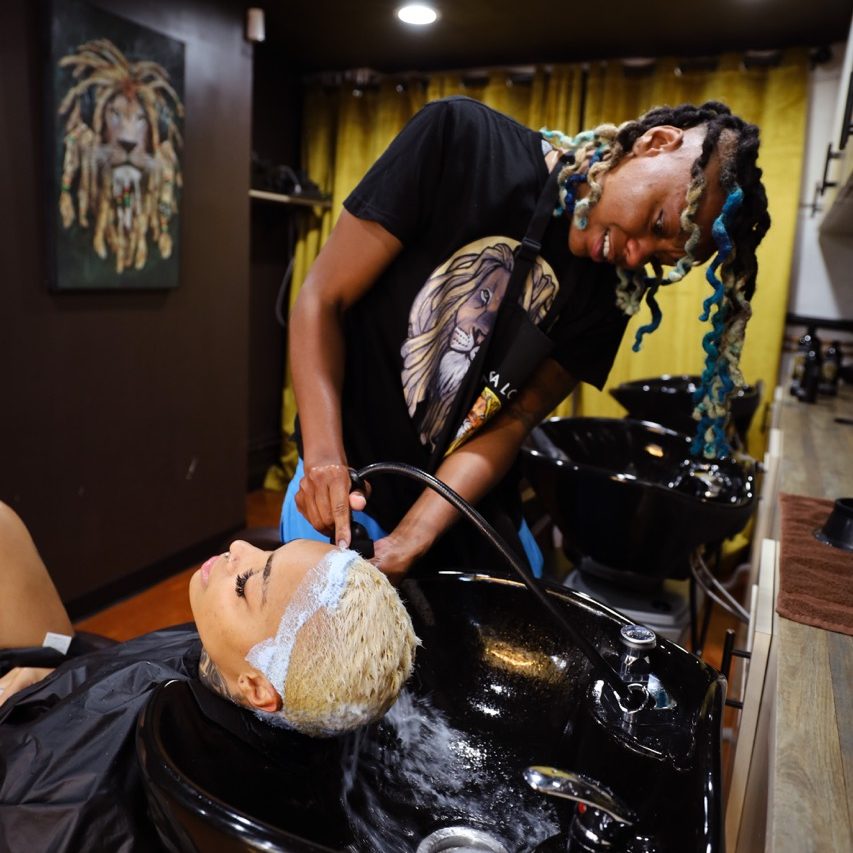
From slip-and-fall accidents to flat iron burns to machinery failure, there are a lot of things that can go wrong when running a salon. You can’t run from it or hide from it. The nature of the beauty industry will walk you straight into liabilities if you’re not careful.
Luckily, there are tons of insurance policies available to keep you, your employees, and your business safe. The issue for a lot of beauty professionals is knowing how to pick the right one and what factors to consider.
In this article, we will walk you through how to choose the right type of insurance for you. As a disclaimer, we are not an insurance agency or legal experts. We are sharing with you what you may generally need when starting a salon. Please reach out to legal professionals to get quotes for your particular situation.
First, let’s discuss different types of insurance and in what case scenarios you would need each one.
General Liability Insurance
Let’s say you have a competitor down the street from your salon. Perhaps you start a marketing campaign boasting about the superiority of your services and include marketing of similar likeness to your competitor. Your rival could sue you if you don’t have general liability insurance.
In another example, let’s say that one of your employees accidentally spills some shampoo on the floor and doesn’t put up a caution wet floor sign. Soon after, a customer slips on that same spot and incurs a concussion. Without general liability insurance, your business might be in jeopardy.
In our last cautionary tale, let’s assume that a hot iron was left on overnight. If a fire spread through your building and the neighboring building, then you would have to pay incredible property damage without general liability insurance.
By now, you should see how critical it is for a salon owner to get general liability insurance. This type of insurance will protect your business from third-party claims such as property damage, defamation damages, and bodily damages. Basically, this protects you from others’ claims to sue you.
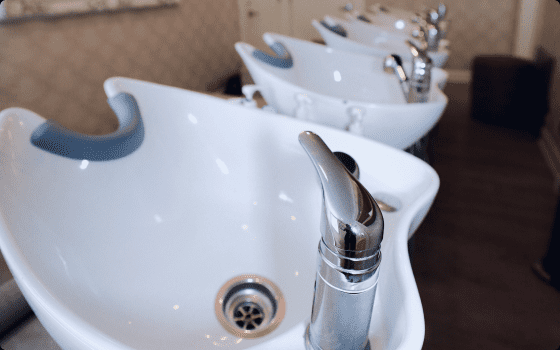
Commercial Property Insurance
If the thought of a potential zombie apocalypse raiding your store scares you, then you should probably consider getting commercial property insurance. This type of insurance covers damages to your storefront, assets, or machinery.
We know how much money it takes to invest in a brick-and-mortar business and anything could happen. An innocuous fire could spread from a faulty outlet. Or if your business is in an area with a high crime rate, then vandalism and theft are possible. These situations are not your fault but you must be prepared when they do happen.
Commercial property insurance also covers inventory and repairs to equipment. So let’s say one of the sinks that you wash clients’ hair in breaks. Commercial property insurance protects you from any costs relating to that damage and also covers any revenue lost from that appliance being down. So let’s say the sink station broke down during a busy holiday season. Commercial property insurance would cover those losses.
One last note on commercial property insurance. You may want to consider obtaining a sewer backup endorsement. For some reason, most commercial property insurance does not include sewer protections in its policies. Being in the beauty industry will often require working with appliances that need pipes and drains so it’s critical to incorporate that into your policy.
Business Owner’s Policy (BOP)
As a small business owner, you may be offered a business owner’s policy (BOP) which includes both general liability insurance and commercial property insurance. Commercial property insurance covers damages to your own property. It usually costs more to buy both policies separately so most beauty professionals opt to purchase a BOP instead.
Also, a BOP usually includes business interruption insurance which protects you from any loss of revenue due to a covered peril. Situations like fires, lightning, wind, and fallen objects are all protected by a business interruption policy. Likewise, any temporary relocation expenses are also covered in business interruption insurance.
Professional Liability Insurance
Let’s say you’re an esthetician and perform an eyelash extension service on a client. You perform the service well but then get a call the next day that your client has an eye infection and their eyesight is deteriorating.
Or let’s say you’re a master barber and performed your signature haircut on a client. You clean up the edges with some colored hair spray to fill in any patchy areas. Although you asked if they had any allergies beforehand and the client said, “no”, they immediately break out into hives due to a chemical in the spray.
Both these incidents and more and reasons why you as a business owner should invest in professional liability insurance or errors and omissions insurance (E&O insurance). This type of insurance protects your business from any type of liability while performing a professional service. Professional liability is sometimes required in certain states.
Even if you were not at fault, professional liability insurance can cover any costs related to legal costs. This includes lawyer fees, settlements, and court fees.
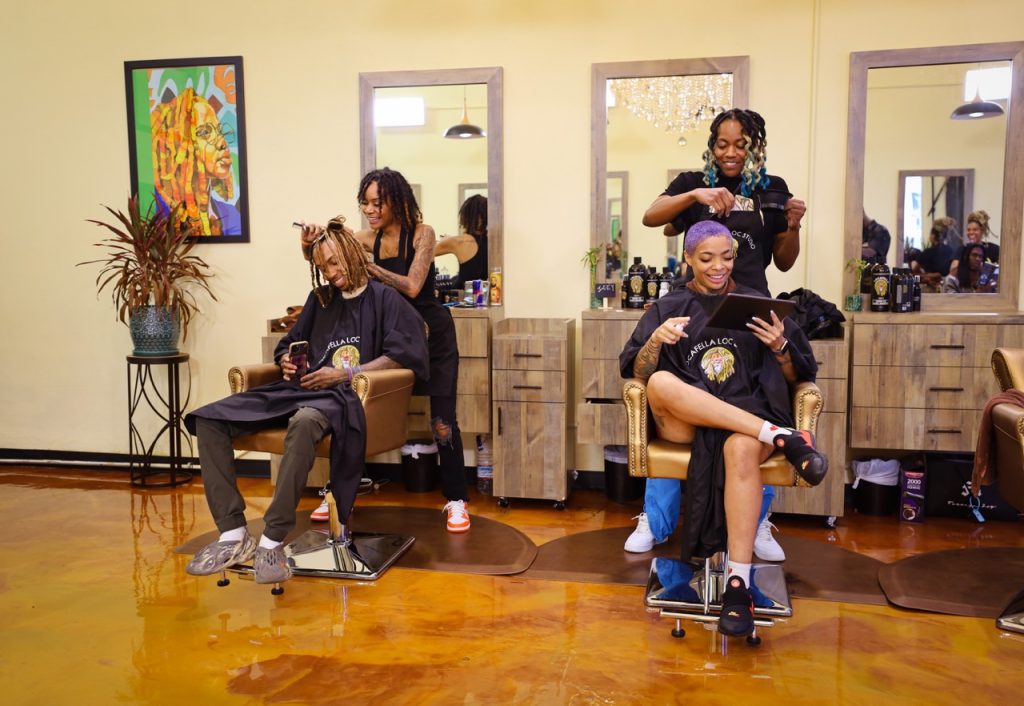
Workers Compensation Insurance
If you have employees of any kind, then you need workers’ compensation insurance. This type of insurance policy covers your staff in case they get injured at your salon. Unlike other policies that may be optional, this plan is mandatory for all salons.
If we think about it, there are a lot of risks associated with working in a salon. One could burn themselves with hot tools, receive a chemical burn from improperly handling dangerous products, or a salon worker could catch a virus in the middle of a pandemic. With so much that could go wrong, there’s no wonder why this policy is so critical.
In the end, no salon owner wants to be required to come out of pocket for hospital expenses due to an accident. Especially one in which you were not at fault. Nor does anyone want to pay for legal expenses in the event one party sues. Workers’ compensation covers those liabilities so that your business is protected.
Commercial Auto Insurance
Most beauty professionals might have a car but did you know that your current auto insurance might not cover business-related driving? If you use your car mostly for business trips, then you might want to get your car insured through commercial auto insurance.
Let’s say you’re a traveling hairdresser or mobile barber. In these cases, you may want to get a business policy on your personal vehicle.
With this type of auto insurance, lawsuits and repairs are covered in case of an accident. Instead of you paying out-of-pocket for work-related accidents, commercial auto insurance provides protection from any damage to vehicles your business uses.
Umbrella Insurance
So umbrella insurance is not like other insurance policies. This doesn’t grant any specific protection but it’s a catch-all for where another policy could be lacking. For example, let’s say someone gets burned in your salon and sues you for two million dollars. If your general liability only covers one and a half million dollars, then the umbrella insurance would cover the rest of the costs. Umbrella insurance policies usually end up being more cost-efficient in the end instead of adding more coverage to another liability insurance.
Commercial Crime Insurance
Every salon owner’s worst nightmare is hiring an employee whom they cannot trust. Let’s say one of your employees finds a way to systematically steal money from the business. In this case, commercial crime insurance would help cover any financial loss.
Commercial crime policies protect your business from any type of illegal financial activity that could transpire in your salon. Incidences like money laundering, theft, fraud, and counterfeit money schemes can be protected by commercial crime insurance whether the activity happened through employees or others.
Unfortunately, commercial property insurance does not cover crime-related activities. Many salon owners are left to pay for financial damages when a crime occurs because they assumed it was covered in general liability insurance. It’s crucial to ensure your business through a commercial crime policy especially if you work with a lot of cash on hand.
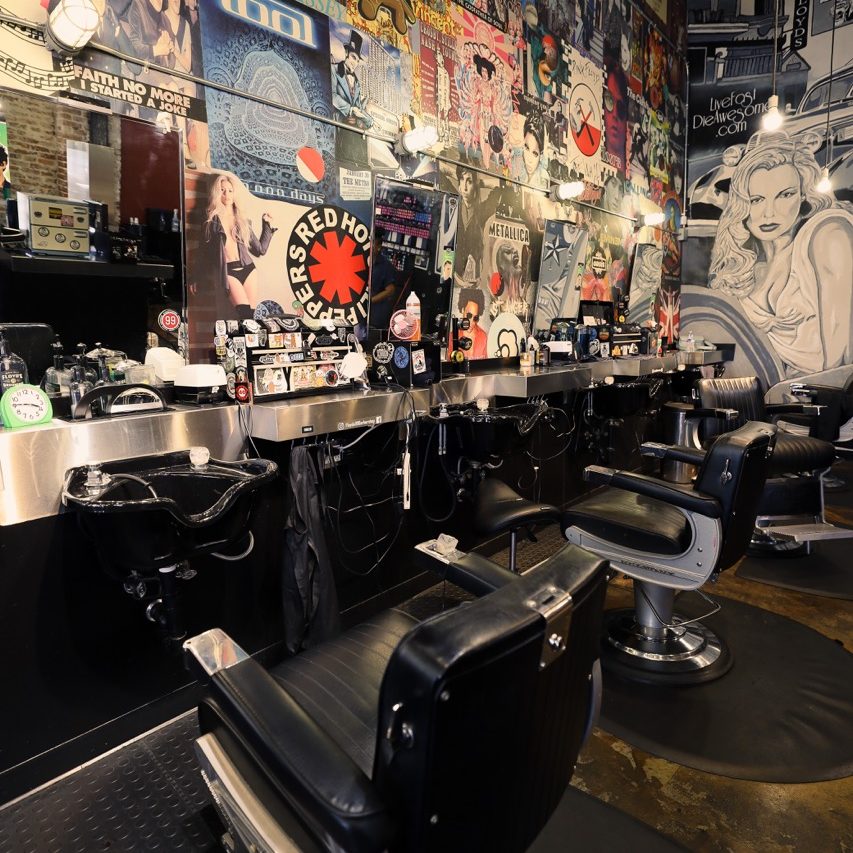
Factors to Consider When Purchasing Insurance
So you’re probably racking your mind thinking about how you can afford all these different policies. The good news is that different factors can affect the final costs of your premiums. Depending on the different characteristics of your unique business, you may discover that you have more options as far as coverage.
Bear in mind that cost may be a big factor in deciding what best insurance policies to pick but nothing beats having peace of mind. Getting the lowest premium might save you money in the short run but might leave you hanging when it’s time to file a claim.
We’ll go through the different factors that you may need to consider when settling on a policy that works best for you.
Operations
First, consider how your business runs on a day-to-day basis. A mobile salon with minimal machinery will probably pay less in insurance than a high-scale salon with more specialized equipment.
Revenue
Every salon owner dreams of making more money and becoming more successful. The bittersweet reality is that the more revenue your salon brings in, the higher your premium will be for most liability insurance. This is because courts consider a salon’s profits in settling legal cases.
So if you own a high-scale salon and someone trips and falls, then the judge might award the victim with a higher settlement. Insurance companies consider these types of scenarios when offering insurance.
Employees
More employees increase the likelihood of something going wrong. The potential for mistakes increases and so does your insurance. The amount of staff you have factors into policy costs about general liability and workers’ compensation.
Deductibles
When you opt-in for a higher deductible, you take upfront and take on more responsibility for a financial claim. This lowers your premium and can affect how you pay for insurance in the long run.
Coverage amount
How much coverage you need will affect your insurance costs. If you increase your limits, you will end up paying more.
Note: Remember the umbrella policy we discussed earlier. This would be a useful policy to have to save money in case a claim is not fully covered.
Location
Where you set up business can have a huge impact on your insurance cost. If you live in a high crime or extreme weather location, then you may have to raise your salon insurance costs. Especially your commercial property premium. If you find yourself in this predicament, it may be helpful to get a commercial crime policy as well.
Conclusion
Choosing the best business insurance for your salon may seem challenging at first but it is oh-so necessary.
In an industry as volatile as beauty, anything can go wrong. Whether you own a barbershop, hair salon, or beauty salon, mistakes are inevitable.
There are a lot of things to worry about as a beauty professional and liability shouldn’t be one of them. Getting the proper insurance that works best for your business should be of top priority. Be sure to speak with an insurance agent to better assess the best plan of action for you.
But insurance is just one piece of the puzzle when it comes to owning your own salon. BeautyTrak can help with the other pieces to help you scale your beauty business to a six-figure empire.
We’re also excited to work with our partner, Florida Agricultural and Mechanical University (FAMU) to provide you with practical tools to help you soar as a beauty professional. Just click the link below to learn more and enroll in our flagship program, Starting a Six-Figure Beauty Business.
More Blogs
- Top 10 Tips on Organizing Your Salon
- 9 Easy Ways to Increase Your Income as a Beauty Professional
- The Art of Balancing Creativity and Business in the Hair Industry
- How to Embrace Your Entrepreneurial Spirit as a Beauty Professional
- How to Open a Salon in a New City
Proudly powered by WordPress
Proudly powered by WordPress
Independence Day Self-Care: Taking Time for Relaxation and Reflection
Reading Time: 10 minutesEmbrace self-care and find balance in the beauty industry
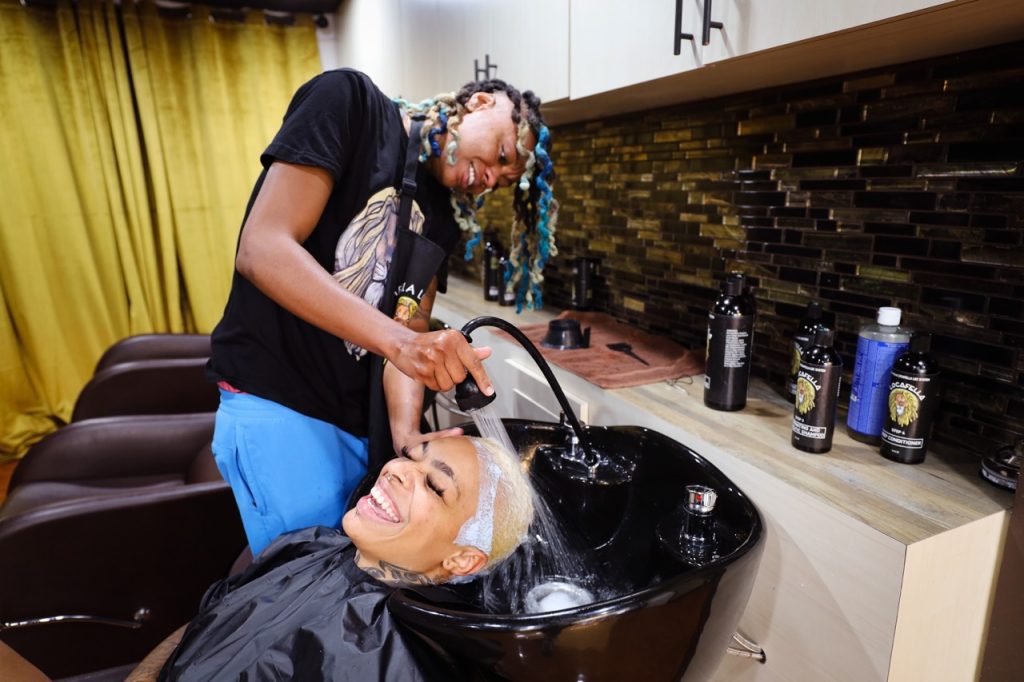
The holiday season is a bustling time for beauty professionals, with clients eagerly seeking their expertise to look their best for Independence Day celebrations. While it’s important to provide exceptional service to clients, it’s equally crucial for beauty professionals to prioritize self-care and find moments of relaxation and reflection amidst their busy schedules. Taking time for oneself allows beauty professionals to recharge, rejuvenate, and maintain a healthy work-life balance. In this blog, we will explore the importance of self-care for beauty professionals during the hectic holiday season and offer ideas for self-care activities, relaxation techniques, and strategies to help professionals find tranquility and harmony.
The Importance of Self-Care for Beauty Professionals
As beauty professionals, you dedicate your time and energy to enhancing the well-being and confidence of your clients. However, neglecting your own needs can lead to burnout, diminished creativity, and ultimately affect the quality of your work. By prioritizing self-care, you not only invest in your own physical and mental well-being but also ensure that you can deliver the best possible experience to your clients. Remember, self-care is not selfish; it’s a necessity for your personal and professional growth.
Self-Care Activities for Beauty Professionals
a) Pamper Yourself: Set aside time for a relaxing spa day, where you can indulge in a facial, a massage, or a soothing bath. Treat yourself to some quality skincare products or experiment with new makeup looks just for fun.
b) Disconnect from Technology: Constant exposure to screens and social media can be draining. Take breaks from your devices, engage in offline activities like reading a book, going for a walk, or enjoying a hobby that brings you joy.
c) Unwind in Nature: Spend time outdoors, whether it’s taking a stroll in a park, going for a hike, or simply sitting by a serene lake. Connecting with nature can be incredibly rejuvenating and help clear your mind.
d) Practice Mindfulness: Incorporate mindfulness techniques into your routine, such as meditation, deep breathing exercises, or yoga. These practices can promote relaxation, reduce stress, and increase your overall well-being.

Strategies to Find Balance Amid Busy Schedules:
a) Time Blocking:
Time blocking is a highly effective strategy that involves dividing your day into specific blocks of time dedicated to different tasks or activities. It helps you prioritize your work, manage your time efficiently, and ensure that you have dedicated periods for self-care and relaxation. Here’s an elaboration on time blocking and how beauty professionals can make the most of it:
Define Your Priorities: Start by identifying your key priorities and goals. Consider both your professional and personal commitments. What are the essential tasks that need to be accomplished? What self-care activities are important for your well-being? By understanding your priorities, you can allocate time accordingly.
Create a Schedule: Take a look at your typical workday or week and create a schedule that includes specific time blocks for different activities. Allocate blocks for client appointments, administrative tasks, self-care, breaks, and personal time. Be realistic and consider factors like the duration of each activity and any potential overlaps or transitions.
Protect Your Time Blocks: Treat your time blocks as sacred appointments with yourself. Honor these commitments and avoid scheduling conflicting tasks or appointments during these periods. Communicate your availability clearly to clients and colleagues, so they understand when you are unavailable.
Be Flexible, yet Structured: While time blocking provides structure to your day, it’s important to remain flexible. Emergencies or unexpected situations may arise, requiring adjustments to your schedule. Allow room for flexibility within your time blocks, but ensure that you maintain the overall structure and balance.
Set Boundaries and Say No: Establish boundaries to protect your time blocks. Learn to say no when your schedule is already filled, and taking on additional tasks or appointments would hinder your self-care or quality of work. Prioritizing your well-being is crucial, and setting boundaries helps you maintain a healthy work-life balance.
Evaluate and Adjust: Regularly review your time-blocking schedule to evaluate its effectiveness. Assess whether you are able to accomplish your tasks within the allocated time and if you are giving enough attention to self-care. Make adjustments as needed to optimize your schedule and ensure that it aligns with your evolving needs.
Maximize Productivity: Within each time block, focus on the specific task or activity at hand. Minimize distractions, such as turning off notifications or finding a quiet workspace. Use productivity techniques like the Pomodoro Technique (working in focused bursts with short breaks) to maintain high levels of concentration and efficiency.
By implementing time blocking, beauty professionals can create a well-structured and balanced routine that allows them to fulfill their professional responsibilities while prioritizing self-care. Remember, effective time management enhances productivity, reduces stress, and provides the necessary space for relaxation and reflection, ultimately contributing to your overall well-being and success.
b) Delegate and Collaborate:
Delegating and collaborating are powerful approaches that allow beauty professionals to share their workload, leverage the strengths of others, and create a supportive and efficient work environment. Here’s an elaboration on the importance and benefits of delegation and collaboration:
Recognizing the Need for Delegation and Collaboration:
As a beauty professional, you may find yourself overwhelmed with numerous tasks and responsibilities, especially during the busy holiday season. Recognizing when it’s appropriate to delegate or collaborate is key. Delegation involves assigning tasks to others with the necessary skills and capabilities, while collaboration involves working with colleagues to accomplish shared goals.
Identifying Strengths and Expertise:
Take the time to assess your own strengths and weaknesses. Identify tasks that align with your expertise and those that can be effectively handled by others. By recognizing the strengths of your colleagues or team members, you can delegate tasks that will be better suited to their skill sets. Collaboration allows you to leverage diverse perspectives and skills, resulting in more innovative and well-rounded outcomes.
Building Trust and Communication:
Delegation and collaboration rely heavily on trust and effective communication. Clearly articulate your expectations, provide necessary instructions and resources, and maintain open lines of communication with those you are working with. Trust in the abilities of your colleagues and foster an environment where everyone feels comfortable asking for help or clarifying any uncertainties.
Empowering Others:
Delegation and collaboration empower individuals by allowing them to develop new skills, expand their knowledge, and contribute to the team’s success. By entrusting tasks to others and involving them in decision-making processes, you promote a sense of ownership and responsibility, which boosts morale and motivation.
Improved Efficiency and Productivity:
Delegating or collaborating on tasks allows you to focus on your core responsibilities while ensuring that all tasks are completed efficiently and effectively. By sharing the workload, you can prevent burnout, maintain a high level of productivity, and deliver quality results. Collaboration brings together different perspectives, expertise, and ideas, leading to more comprehensive and innovative solutions.
Enhancing Creativity and Learning:
Collaboration fosters a dynamic exchange of ideas and promotes a creative and learning-oriented environment. When working together, beauty professionals can share techniques, insights, and industry trends. This collaborative atmosphere cultivates professional growth, stimulates creativity, and enhances the collective knowledge and expertise of the team.
Foster a Supportive Network:
Delegation and collaboration build strong relationships and create a supportive network within the beauty industry. By working closely with colleagues, you can share experiences, seek advice, and support one another during challenging times. This network provides a sense of community, encouragement, and the opportunity for continuous learning and improvement.
Remember, delegating and collaborating doesn’t mean relinquishing control; it’s about leveraging the strengths of your team and creating a more productive and harmonious work environment. By sharing the workload and embracing collaboration, beauty professionals can find relief from overwhelming tasks, achieve better work-life balance, and ultimately deliver exceptional results to their clients.

c) Set Realistic Expectations:
Setting realistic expectations is vital for beauty professionals during the busy holiday season. It involves being honest with yourself, your clients, and your colleagues about what you can reasonably accomplish within a given timeframe. Here’s an elaboration on the importance and strategies for setting realistic expectations:
Understand Your Capacity:
Recognize your limitations and understand how much work you can realistically handle without sacrificing quality or your well-being. Consider factors such as the number of clients you can comfortably serve, the time required for each appointment, and the necessary time for administrative tasks and self-care. Knowing your capacity allows you to set expectations that align with your capabilities.
Communicate Clearly:
Open and transparent communication is key when setting expectations. Clearly communicate your availability, services, and any limitations or scheduling constraints to your clients. Be upfront about potential delays or adjustments due to the busy holiday season. This ensures that your clients have a realistic understanding of what to expect and can make informed decisions.
Manage Client Expectations:
Educate your clients about the time and effort required to achieve their desired results. Set realistic expectations regarding the outcome, the number of sessions or appointments needed, and any potential limitations. By providing accurate information, you can avoid disappointment or unrealistic demands that may arise from miscommunication.
Prioritize Quality over Quantity:
Instead of overbooking yourself to accommodate more clients, prioritize delivering quality service to each client. Setting realistic expectations regarding the time and attention you can devote to each appointment ensures that your clients receive the best experience. Quality work builds trust, fosters loyalty, and can lead to positive referrals, which is ultimately more valuable than a high volume of clients.
Allow Buffer Time:
Incorporate buffer time into your schedule to account for unexpected delays, additional consultations, or unexpected client needs. Allowing some flexibility in your schedule helps prevent stress and ensures that you can handle unforeseen circumstances without compromising the overall quality of your work.
Practice Effective Time Management:
Efficiently managing your time is crucial for setting and meeting realistic expectations. Utilize tools such as calendars, scheduling apps, or task management systems to stay organized and track your commitments. Prioritize tasks based on their importance and deadlines, allowing you to allocate sufficient time for each.
Learn to Say No:
While it can be challenging, learning to say no is essential to set realistic expectations and maintain a healthy work-life balance. If your schedule is already full or taking on additional commitments will compromise your well-being or the quality of your work, politely decline and explain your limitations. Remember, saying no allows you to honor your existing commitments and deliver exceptional service to your current clients.
By setting realistic expectations, you ensure that both you and your clients have a clear understanding of what can be accomplished during the busy holiday season. This approach promotes transparency, professionalism, and ultimately leads to greater client satisfaction and your own well-being as a beauty professional.
d) Celebrate Achievements:
Celebrating achievements is a crucial aspect of self-care and maintaining a positive mindset as a beauty professional. It involves acknowledging and rewarding yourself for your hard work, accomplishments, and milestones. Here’s an elaboration on the importance and strategies for celebrating achievements:
Recognize Your Efforts:
Take the time to acknowledge and recognize the efforts you put into your work. Celebrate the progress you have made, whether it’s mastering a new technique, completing a challenging project, or receiving positive feedback from clients. Recognizing your efforts boosts self-confidence, motivation, and overall job satisfaction.
Set Milestones and Goals:
Break down your long-term goals into smaller milestones or targets. Each time you achieve one of these milestones, celebrate the accomplishment. By setting measurable goals, you give yourself the opportunity to celebrate incremental successes along the way, fostering a sense of accomplishment and progress.
Reflect on Successes:
Periodically reflect on your achievements and successes. Take note of the positive outcomes, the impact you have made on your clients, and the growth you have experienced as a beauty professional. Reflecting on successes reminds you of your capabilities, builds self-esteem, and fuels your motivation for future endeavors.
Reward Yourself:
When you achieve a significant milestone or accomplish a challenging task, reward yourself. Treat yourself to something that brings you joy, such as a spa day, a small indulgence, or a special outing. Celebrating achievements with a reward reinforces the positive association with your accomplishments and encourages continued dedication and hard work.
Share Successes with Others:
Share your achievements with your colleagues, friends, and family. Allow yourself to bask in the joy of your accomplishments by sharing your progress and milestones. Celebrating with others not only boosts your own sense of achievement but also fosters a supportive network that can provide encouragement and celebrate with you.
Document Your Successes:
Keep a record of your achievements and milestones. This can be in the form of a journal, a digital portfolio, or a collection of client testimonials and before-and-after photos. Being able to visually see and review your successes serves as a reminder of your growth, skills, and the positive impact you have made on others.
Practice Gratitude:
Express gratitude for your achievements and the opportunities that have come your way. Cultivate a mindset of appreciation for the progress you have made and the experiences that have contributed to your success. Practicing gratitude not only enhances your overall well-being but also fosters a positive and optimistic outlook on your future endeavors.
Celebrating achievements as a beauty professional is essential for maintaining motivation, self-confidence, and a positive mindset. By recognizing and rewarding your hard work, you reinforce your dedication to your craft, inspire continued growth, and find joy in the journey of your professional development.
Conclusion
At BeautyTrak, we understand the unique challenges that beauty professionals face in running a profitable business. That’s why our digital business platform is designed to provide the necessary resources, training, and funding to support beauty professionals in their entrepreneurial journey.
As we approach Independence Day, it’s essential for beauty professionals to recognize the importance of self-care amidst their busy schedules. Taking the time for relaxation and reflection is not only beneficial for their well-being but also crucial for maintaining a successful and sustainable business.
Through our platform, we encourage beauty professionals to prioritize self-care activities and implement strategies such as time blocking, delegation, and collaboration. By doing so, they can find balance, manage their time effectively, and prevent burnout. Our goal is to empower beauty professionals to thrive in their careers while ensuring their overall well-being.
We believe that celebrating achievements is an integral part of fostering a positive mindset and motivation. At BeautyTrak, we encourage beauty professionals to celebrate their accomplishments, both big and small, and take pride in their hard work and dedication. We aim to provide a supportive community where beauty professionals can share their successes, inspire one another, and find the encouragement needed to reach new heights in their businesses.
As Independence Day approaches, let us celebrate the independence and success of beauty professionals. At BeautyTrak, we are committed to being the go-to platform that equips beauty professionals with the tools, knowledge, and funding to thrive in the industry. Together, we can build a community that values self-care, recognizes achievements, and fosters a healthy work-life balance for beauty professionals nationwide.
Join BeautyTrak today and embark on a journey of self-care, growth, and prosperity in your beauty business. Your well-being and success matter to us, and we are here to support you every step of the way.
Enroll in our membership program to receive more tools to grow your beauty business:
More Blogs
- Top 10 Tips on Organizing Your Salon
- 9 Easy Ways to Increase Your Income as a Beauty Professional
- The Art of Balancing Creativity and Business in the Hair Industry
- How to Embrace Your Entrepreneurial Spirit as a Beauty Professional
- How to Open a Salon in a New City
How to Start a Beauty Business on a Shoestring Budget
Reading Time: 8 minutesA simple guide to jumpstart your beauty career
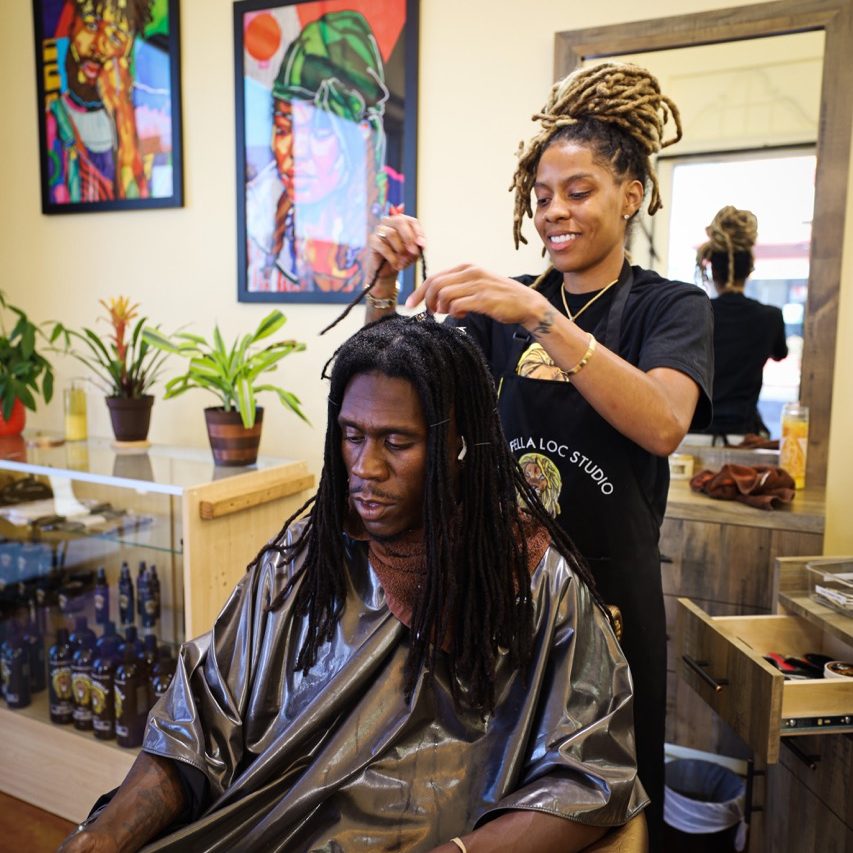
You find yourself scrolling aimlessly through social media. You casually pass by unfunny memes and jaded think pieces on your timeline. You roll your eyes and let out a heavy sigh of boredom.
You’re just about to log off but then you come across a short promotional video of a new beauty business your colleague just started.
Her entire brand is breathtaking and sparks something inside of you. You feel inspired as you navigate through her new website and check out her different services wondering how she ever did it.
Deep down, you have the same desire to start your own beauty business but you’re afraid of what it will cost to get started. You dig into your pockets, wallet, and piggy bank but the only thing you retrieve is dust and dreams.
How in the world is one supposed to bootstrap a beauty business without a big budget?
This is a common dilemma among many beauty professionals seeking to jump into their careers. Even though you have the skills, the fear of financing your business holds you back from chasing your dreams.
This is understandable… but it’s a huge false assumption that you need a lot of capital to start a beauty business. Now, of course, you will need some money to finance your business, but you don’t need as much as you think you need to just get started.
The best part about starting a beauty business on a limited budget is that you have the space to be creative. When you have less capital to start up, you are forced to prioritize what you need and be innovative with what you don’t have.
It might seem counterintuitive at first, but in this article, we are going to break down how you can start your beauty business on a shoestring budget and how to start getting paid to do what you love.
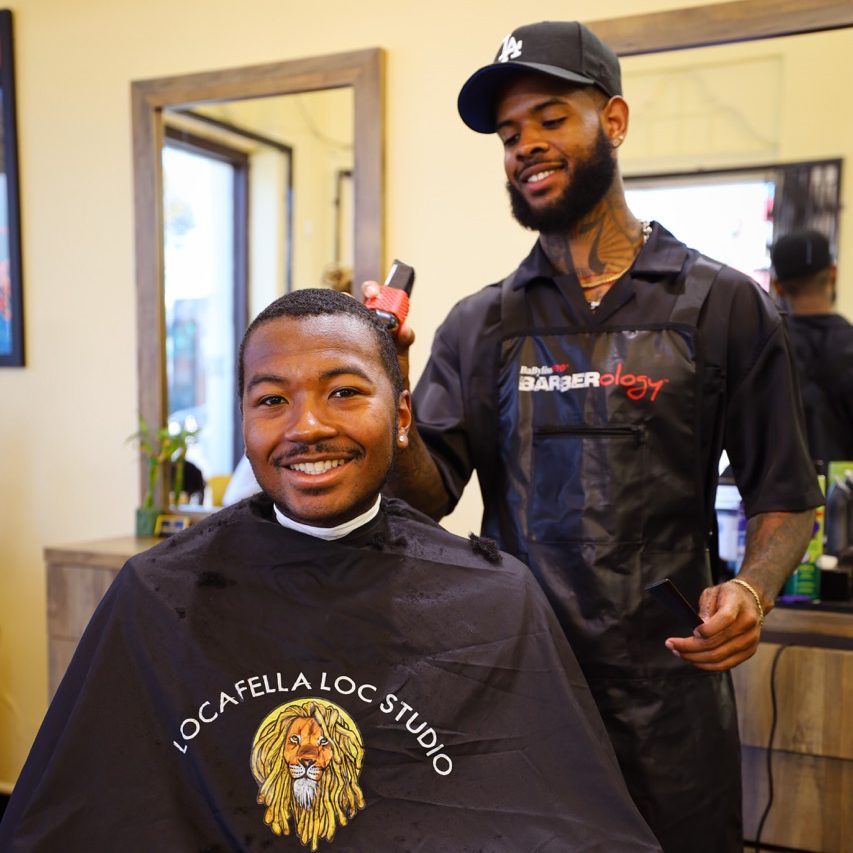
1. Research the industry
First things first, you have to do your due diligence and research the industry you want to dive into before officially starting anything. Are you starting a hair, nails, barbering, or cosmetic business?
Beauty is a $511 billion industry that is continuously expanding every day. You might already have the talent, but it’s still important to know what you’re getting into and what to expect. No matter how far your business may go, it’s always good practice to remain a student eager to learn something new.
And the best thing about this step is that it doesn’t require any upfront costs. All you need is a computer or mobile device and wifi. We are in the technology age and there are so many free resources out there to utilize.
As you research, identify key trends in your industry. You could be very skilled and offer services and products that are no longer relevant to the general population. We don’t want that. We want to make sure we are delivering the most relevant services to the consumers.
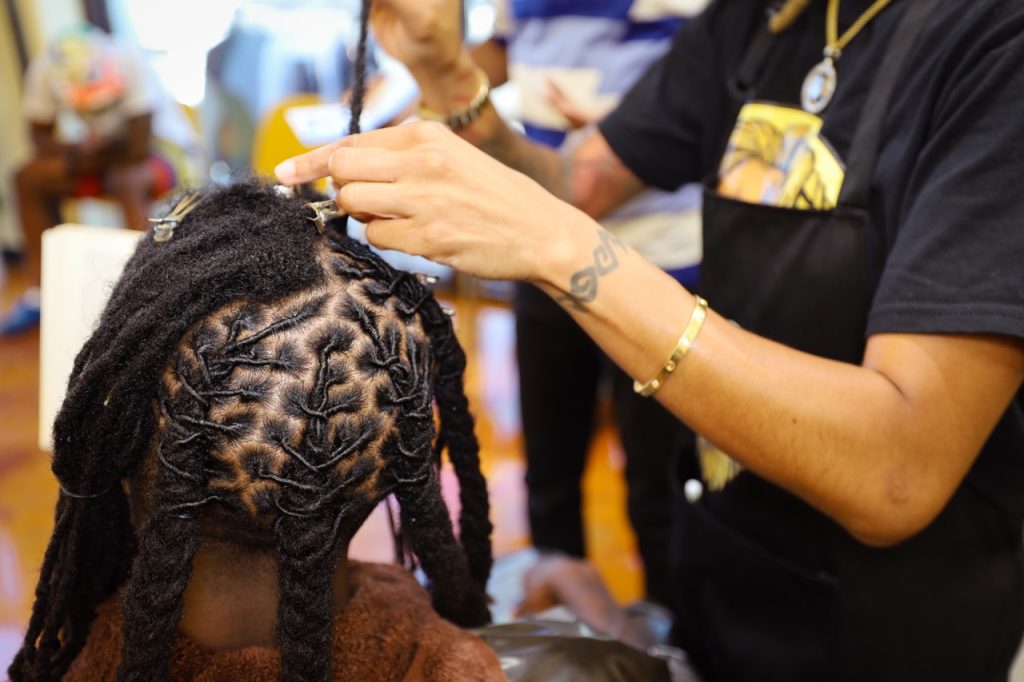
2. Niche
Once you have a good grasp of the industry you’re stepping into, the next order of business would be to determine your branding. What does your business stand for? What are its core values and vision? You need to understand your value proposition and what makes your brand different from the crowd.
Because the truth is, you are not the first to start a beauty business and you probably won’t be the last. There is a whole market already out there that ebbs and flows with different consumer trends. Knowing what makes your business unique will put you one step ahead of the market.
This brings me to niching. Niching is an effective marketing tactic that focuses on marketing to a very select group of people. Think about it like this. It’s easier to be a big fish in a small pond than a small fish in a big pond.
A rookie mistake many beauty professionals make when they first enter the industry is trying to market to everyone. I know it probably sounds counterintuitive because I’m sure you want everyone to request your services and buy your products. This doesn’t end up working in the long run because it is impossible to please everyone. It’s a tough pill to swallow but you will not be everyone’s cup of tea and that is okay.
As a start-up business, it will be challenging to try to conform yourself to what everyone wants. As the saying goes, “a jack of all trades is a master at none.” Hone into one customer group and one main service or product first. You’ll get the chance to expand as time goes on, but it’s best to master and brand yourself as one thing in the beginning.
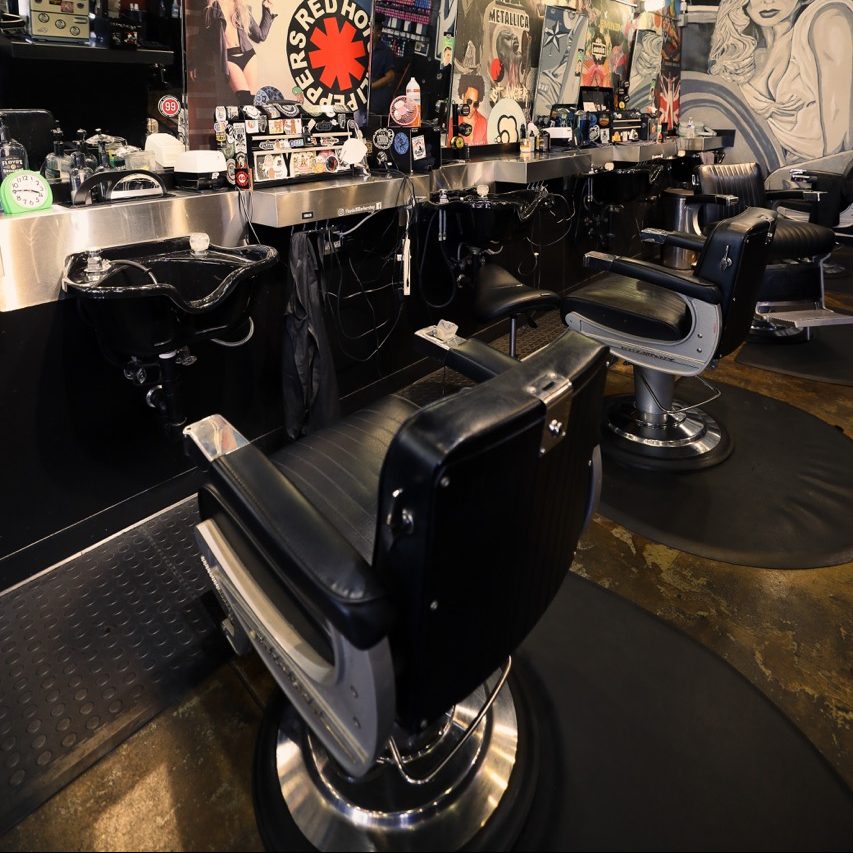
3. Research competitors
So now that we’ve taken some time to understand the industry and niche our brand, the next step would be to research competitors. As we mentioned previously, you are not the first to start a beauty business. There is a sea of competition out there of companies that have been established for a long time.
Another benefit of niche marketing is that there is less competition in an unsaturated market. It’s easy to become established with a small number of people than to try to compete with big-name brands. Especially when you don’t have the same capital and resources as they do.
But within this small pool, look around you. Who are your main competitors and what are their value propositions? What do you notice that they are lacking and where do you think you can bridge the gap?
During your research, identify the key strengths and weaknesses of each competitor. Investigate their marketing strategies as well. All these things are intel for your business. It will give you leverage as you build your company from the ground up.
4. Get the necessary certifications
This next step is important not only for you to start your business, but for you to stay in business. Depending on the industry you are stepping into, it may benefit you to research the different certifications you may need.
For example, you may be a self-taught barber or hairdresser, but when it comes to opening a salon, there are certain qualifications your state might require. Being certified might not have been on the top of your list while you were operating from home or being a traveling stylist, but as you continue to grow and expand your business, it is important to abide by the laws in your area.
The same goes if you want to sell beauty products. The Federal Department of Agriculture (FDA) has strict guidelines on how to handle, package, and preserve products to ensure the safety and well-being of the population. Anecdotal experiments wouldn’t fly in a court of law if someone was to press charges against your business for negligence. Seek to maintain the integrity of your small business by doing your due diligence and acquiring any necessary certifications.
5. Calculate taxes
Here’s the truth. No one likes paying taxes but we all have to at some point. It’s critical to calculate how you will pay taxes from the very beginning.
How much you pay in taxes has a lot to do with the legal entity you pick for your business. So filing as an individual, partnership, LLC, C corporation, or S corporation all has different tax ramifications. Think about your business long-term and how you envision its growth. Do you see your business as a local beauty salon, or will you eventually want to build an international brand? These are questions to consider at the start of your journey to know how to proceed.
Once you have determined your business structure, you should sit down with your certified public accountant to determine how to pay taxes. Through your consultation, you might be surprised to discover where you can save on tax deductions. What if someone doesn’t have a CPA?

This is a content
6. Calculate start-up costs
Now, we are at the point you were probably anxious to discover. How to actually bootstrap your beauty business from the ground up. As we mentioned in the beginning, you don’t need as much money as you need to start operations as you previously thought. We just need good planning and a bit of creativity.
First things first – you need to calculate your operating expenses. How much money do you need month-to-month to keep your business running? Consider rent, payroll, supplies, licensing, and savings costs. How much “cushion”?
Once you have an idea of how much money you will need, you can dive deeper and seek different alternatives for each expense category. Sometimes, we get “analysis paralysis” due to being overwhelmed by the task ahead. Our advice is to take things one step at a time and keep an open mind about how different things may be accomplished.
You might find out along the way that not everything is an immediate priority. Based on your brand, you might discover one category takes precedence in this season over another. And you might also realize that certain things are not as expensive to acquire as you originally thought.
Once you’ve calculated your operating budget, the next thing to consider is your service costs. How much are you going to charge for your services or products? What systems will you employ to create a fair and reasonable price chart?
It’s important that you don’t wing this step. Unfortunately, many beauty professionals simply base their prices on what competitors are charging. This is a dangerous game to play because you don’t have background knowledge on the reasoning behind a rival’s prices. Basing your prices on someone else’s system might have you short-changing yourself in the end.
Remember, the goal isn’t to be the cheapest. Your goal is to be the best at what you do while turning a profit. Without a proper pricing strategy in place, you might be eating away at your margins, leaving you with less money in your pocket.
7. Consider different forms of financing
Okay, so you’re probably thinking that all of this sounds great – but the numbers are still racking up. We hear you. At the end of the day, it will take some upfront costs to jumpstart your beauty business. It can be daunting to calculate all those numbers and catch a bit of anxiety.
You would be surprised at how many options you have. You could save up a few thousand dollars over a period of time and then launch when you reach your baseline amount. Many businesses start this way and continue to build and grow their business from there.
You could also start a crowdfunding campaign to raise money for your business. This option is a great one for those with a solid business plan and brand message. So share your story and heart with the world, and you might be surprised to discover who backs you up. It doesn’t hurt to try.
And lastly, you could always apply for a small business loan. There has never been a better time to start a business than now. There are so many loans and grants out there that would partner with you in your business venture. Try scheduling an appointment with a business strategist and figuring out the different financing options made available to you.
Conclusion
In conclusion, it is not as difficult as you might have once thought to start a beauty business. If you apply these steps and put in some work on your end, you will be up and running in no time.
Fortunately, you don’t have to go on this journey alone. We are here to help. BeautyTrak offers an in-depth membership program to learn how to finance your small business.

